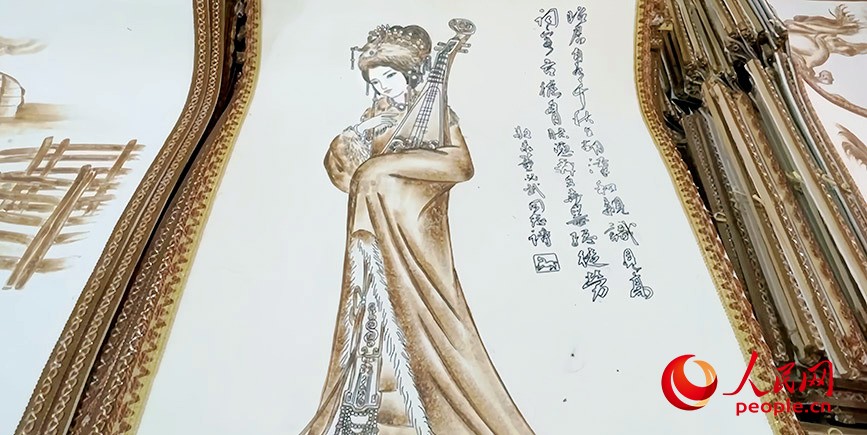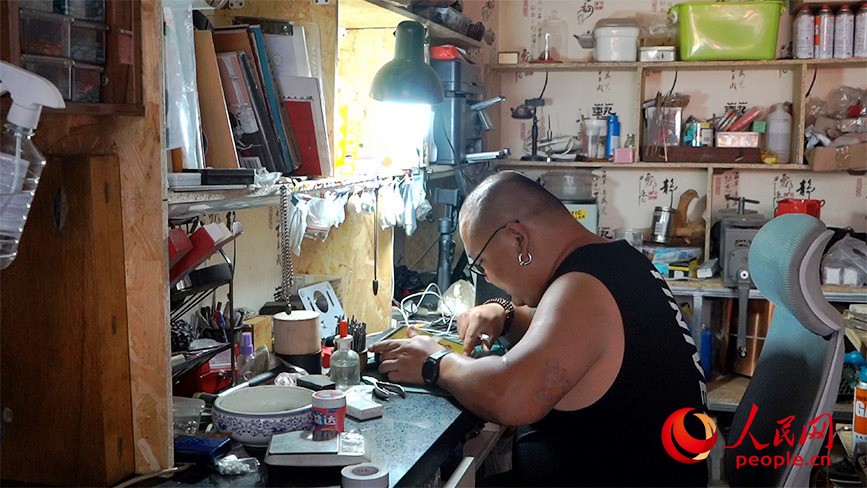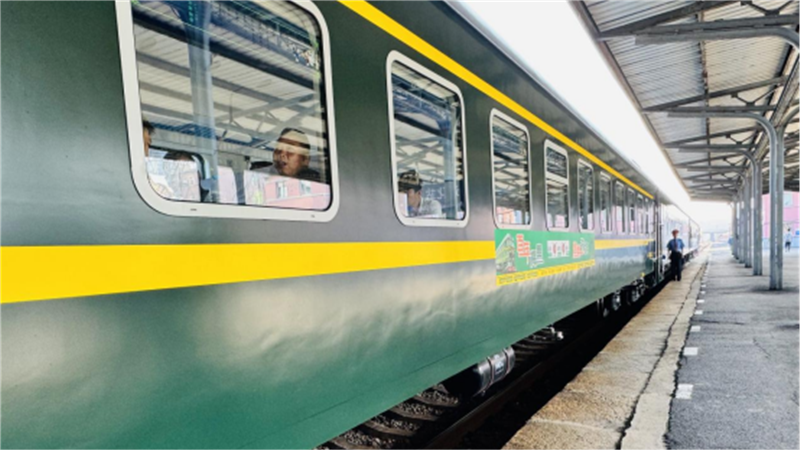Handicrafts light up night economy in N China's Inner Mongolia
During summer nights in north China's Inner Mongolia Autonomous Region, visitors are drawn to the bustling night markets where they encounter a vibrant display of ethnic handicrafts.

Photo shows an array of handicrafts displayed inside a shop selling cultural and creative products located on a street in Hohhot, north China's Inner Mongolia Autonomous Region. (People's Daily Online/Fu Lijuan)
Felt pyrography, an art form that involves using burn marks as decoration and an intangible cultural heritage in Inner Mongolia, traces its roots back to the late Western Han Dynasty (202 BC-25 AD) and flourished during the Ming and Qing dynasties (1368-1911). Without the use of pigments, the artists rely solely on the temperature and pressure of the pyrography pen to create colors.

Photo shows a piece of exquisite felt pyrography work. (People's Daily Online/Kou Yanan)
In early 2000, pyrography artisan Zhao Liu and his family established their shop on Saishang Old Street in Hohhot.
Over the years, they have turned felt pyrography into a flourishing industry chain that incorporates procuring wool felt, manufacturing specialized felt paper, handcrafting felt pyrography, and selling the felt pyrography works.

Photo shows exquisite silver jewelry at a workshop called "Shouyi" in Baotou, north China's Inner Mongolia Autonomous Region. (Photo/Gao Xu)
Similarly inspiring stories of craftsmanship are found on the Golden Street in Baotou, Inner Mongolia.
A workshop called "Shouyi," located on the Golden Street, is always bustling with visitors, who are captivated by the array of Mongolian silver jewelry, including necklaces, bracelets, and earrings.
The exquisite pieces not only preserve the tradition of Mongolian silver jewelry but also incorporate elements from various ethnic cultures. According to owner of the workshop, Su Lidi, the handmade crafts produced here have gained popularity and are exported to Southeast Asia.

Su Lidi, owner of a workshop called "Shouyi" in Baotou, Inner Mongolia, customizes silver jewelry for customers. (Photo/Gao Xu)
In 2022, silver jewelry crafting was recognized as a representative project of intangible cultural heritage at the municipal level in Baotou. Su stated, “I want to do the utmost to showcase these exquisite works to more people, allowing them to appreciate the allure of northern frontier culture.”
In Hailar district, Hulun Buir city, Wen Dousu’s workshop can be found. Wen is an inheritor of the intangible cultural heritage of Mongolian knife making.
Stepping into his workshop, one is immediately captivated by the exquisite ethnic handicrafts, including Mongolian knives, gold and silver jewelry, and bronze sculptures. The elegant and fashionable Mongolian furniture crafted by Wen's team is popular amongst tourists.

Wen Dousu showcases a piece of Mongolian furniture. (People's Daily Online/Liu Yilin)
Wen's team of over 10 artisans takes around 20 days, even with three people working, to complete a chair. They complete the whole process from scratch, including hand-drawn templates to shaping, large pattern carving, refinement, coloring, and packaging. "None of our furniture pieces are identical; they're all handcrafted. Many tourists visiting our studio fall in love with our furniture at first sight, appreciating the exquisite designs and the furniture’s value as collectables," Wen explained.
In recent years, Inner Mongolia has actively promoted and implemented policies to support night economy development. The unique and special "night economy" is illuminating a new nocturnal scene in Inner Mongolia, contributing luster to the region's sustained economic health and vitality.

Photo shows ethnic handicrafts sold at a shop in Hailar district, Hulun Buir city, north China's Inner Mongolia Autonomous Region. (People's Daily Online/Liu Yilin)
Photos
Related Stories
- Traditional Ewenki handicrafts boost local economy in N China's Inner Mongolia
- Artisans showcase handicrafts in national vocational skills competition in SW China
- Trending in China | Ancient wisdom: Lu Ban locking puzzles
- Trending in China | Twisting sticks: Versatile creations for all
- Pic story of artisan of lacquer carving in Beijing
- Trending in China | The crystallization of traditional handcrafted art: Flower-wrapping
- Handmade dolls bring fortunes to local residents in SW China's county
- Trending in China | A new use for wool felt: Stop-motion animation
- Trending in China | Chinese knots: Treasure of Chinese culture
- Craftsman devotes to making Kong Ming Lock in China's Hebei
Copyright © 2024 People's Daily Online. All Rights Reserved.









